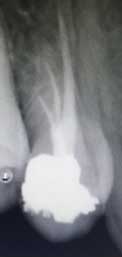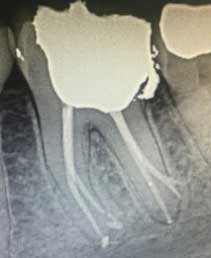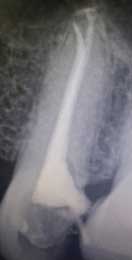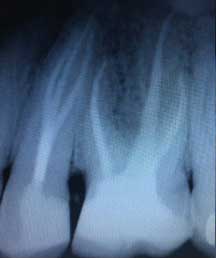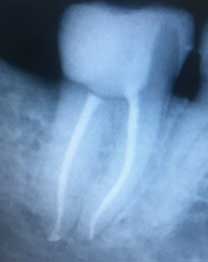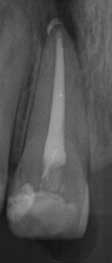11 Jul Two Little Words
Root canal.
Has there ever been more dreaded words spoken at the dental office?
Right now you probably want to stop reading because of those two little words. They conjure up immediate horror as you begin to think about how every coworker around the coffee maker told you how painful a root canal would be. I wish we could come up with a new name.
It’s time for all of us to take a sigh of relief. All of us at the office agree, the greatest advances in dental technology have been in the area of endodontics (specializing in root canals). In dental school, a root canal could take up to four appointments using technology much unchanged from the early days of dentistry. There would be smoke, flames, needles, and scraping inside of the tooth in order to complete the procedure. Enter the war stories around the coffee maker.
Does it hurt? The number one question asked to any dentist when we discuss a root canal. It could be an abscess, a cavity, or a fracture all causing pain. When it’s finally time to begin the process, 95% of the time getting the tooth to go to sleep is the only thing a patient feels; for patients with anxiety about the procedure, sedation is a great option to quell your worries
What’s a root canal? The second question we most often get. It is at this point that I wish to submit a new name to whoever started calling it root canal therapy. How about an inside-out tooth cleaning or root sealing ANYTHING but root canal. The very short answer is we are doing a procedure to remove an infection present inside a tooth and sealing that tooth to prevent future infection. A common misconception is that we are removing a part of your tooth, this is not the case. Inside your tooth, there are spaces where the nerve and blood supply of the tooth reside. During a root canal, we clean all of this space out and seal up the remaining space.
Teeth have many shapes and sizes. The textbook tells us dentists which tooth has how many canals: molars (3), premolars (1-2), and incisors (1). However, anatomy is the exception, not the rule. I have seen molars with six canals and premolars with three canals. The good news is that BGOHC has invested greatly into identifying the exceptions to the rule. Currently, we have a 3D imager capable of looking inside teeth to identify canals, as well as a digital Apex locator that allows us to measure the length of your tooth without added radiation. The combination of these technologies allows us to remove a lot of the uncertainty.
Unfortunately, Root canal therapy is not a sure thing and some of the stories you hear are founded in procedures that did not work out. Root canals can fail, but luckily these cases are few and far between. Reasons for this are: canals that can’t be cleaned, infections too large and widespread, and fracture of the teeth. This last reason is why we highly recommend a crown to ensure the integrity of your tooth as well as its long term prognosis.
Four appointments is luckily a thing of the past, and most root canals are done in one appointment with a minimum of postoperative pain or soreness. Soreness is possible after the procedure, but is largely due to pressure built up by infection and usually dissipates within a few days. T he Doctors at BGOHC are here to make the process as simple, quick, and painless as possible.
A great video to see how a Root canal is performed.
https://www.youtube.com/watch?v=OrZeaKjav3E
Here’s what a root canal looks like on an x-ray. All were completed in our offices and they do a good job in showing the large variation between teeth.


